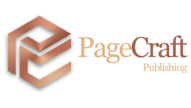Unlock Your Publishing Journey – Request Your Exclusive Publishing Guide Now
Unlock Your Publishing Journey – Request Your Exclusive Publishing Guide Now
Publishing production guideline for authors who are self-publishing their work:
1. Manuscript Preparation:
– Ensure that your manuscript is complete and thoroughly edited for content, grammar, and style.
– Format your manuscript according to the requirements of your chosen publishing platform or printer. This may include specific margin settings, font styles, and line spacing.
2. Cover Design:
– Create or commission a professional and eye-catching cover design that accurately represents the content of your book and appeals to your target audience.
– Ensure that the cover design meets the specific dimensional requirements of your chosen publishing platform or printer.
3. Interior Layout:
– Format the interior of your book, including chapter headings, page numbers, and any special formatting for images, tables, or other visual elements.
– Ensure that the interior layout meets the specific requirements of your chosen publishing platform or printer, including file format and dimensions.
4. ISBN and Copyright:
– Obtain an International Standard Book Number (ISBN) for your book, which is required for most retail distribution channels.
– Consider registering your copyright to protect your work. While copyright registration is not required to secure copyright protection, it can provide additional legal benefits.
5. Publishing Platform Selection:
– Research and select the most suitable publishing platform(s) for your book, considering factors such as distribution options, royalties, and marketing tools.
– Determine whether you will publish in print, e-book, or both formats, and select the appropriate distribution channels for each.
6. Printing and Distribution:
– If you are publishing a print edition, select a reputable print-on-demand (POD) service or printer for your physical book production.
– For e-books, ensure that your files are properly formatted and optimized for the intended distribution channels, such as Amazon Kindle Direct Publishing, Apple Books, or other e-book retailers.
7. Marketing and Promotion:
– Develop a comprehensive marketing plan to promote your book, including strategies for social media, author website, book signings, and other promotional activities.
– Leverage your author platform and network to build anticipation for your book launch and generate early sales.
8. Quality Control:
– Obtain physical and digital proofs of your book to review for any formatting or printing errors before final publication.
– Conduct a final review of all book details, including cover design, interior layout, and content, to ensure everything is accurate and meets your expectations.
9. Launch and Distribution:
– Set a release date for your book and coordinate with your chosen distribution channels to ensure that your book is available for purchase on or before that date.
– Utilize pre-order options if available to generate early sales and build momentum for your book launch.
10. Post-Launch Activities:
– Monitor sales and reader feedback, and adjust your marketing efforts as needed to maximize exposure and sales.
– Consider additional promotional opportunities, such as book reviews, blog tours, and author interviews, to maintain momentum and reach new readers.
This guideline provides a general overview of the steps involved in the publishing production process for self-published authors. Keep in mind that specific details may vary depending on the nature of your book, your target audience, and the publishing platforms and services you choose to utilize.
